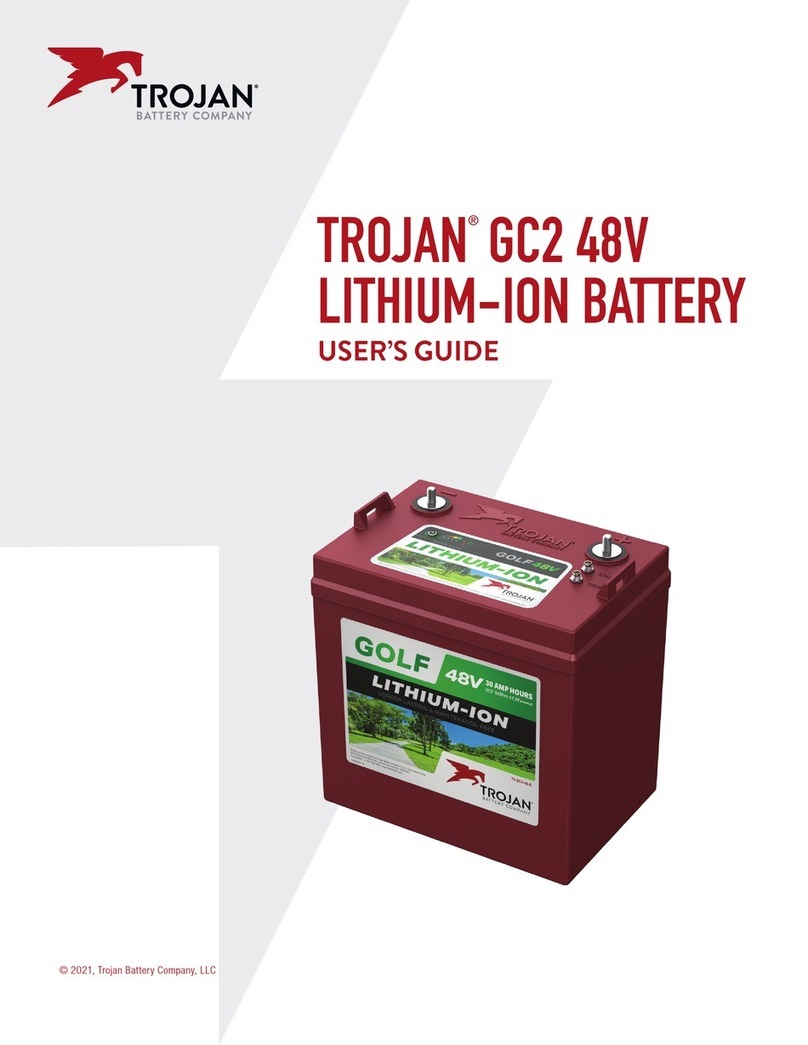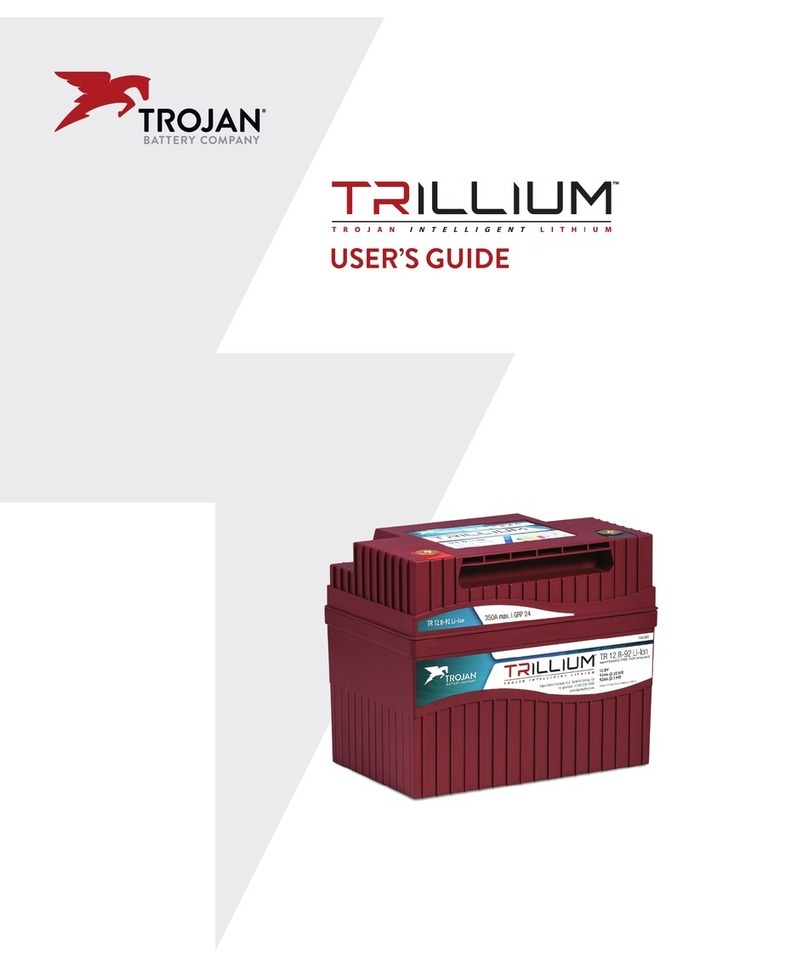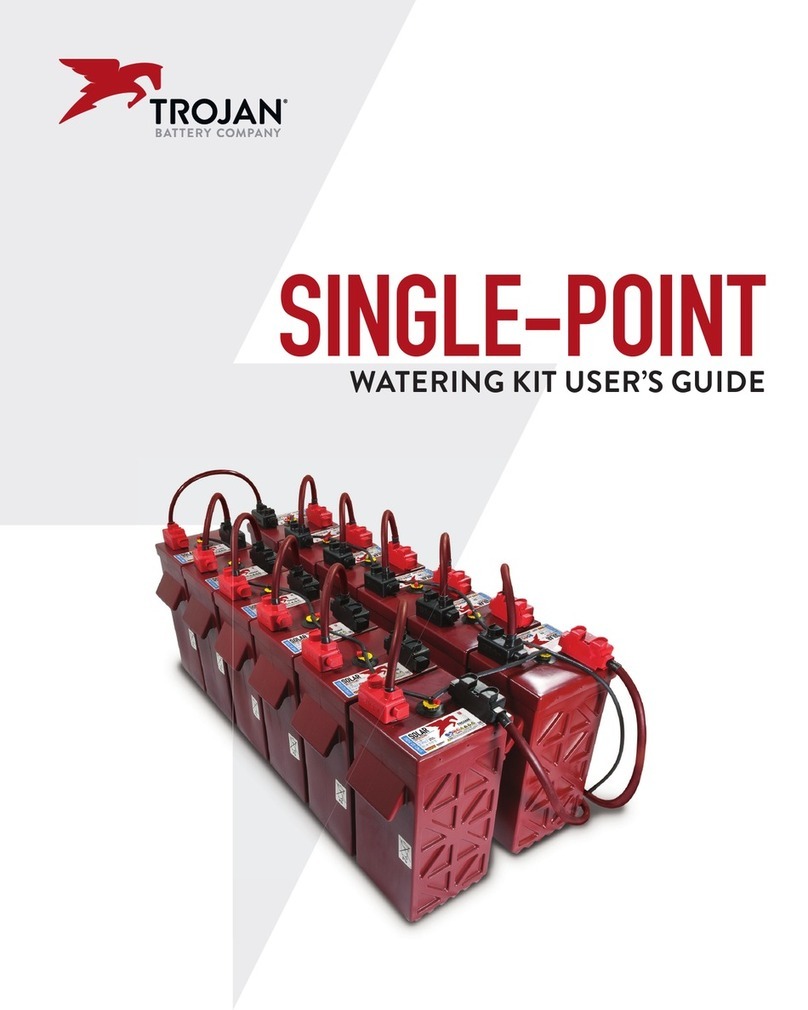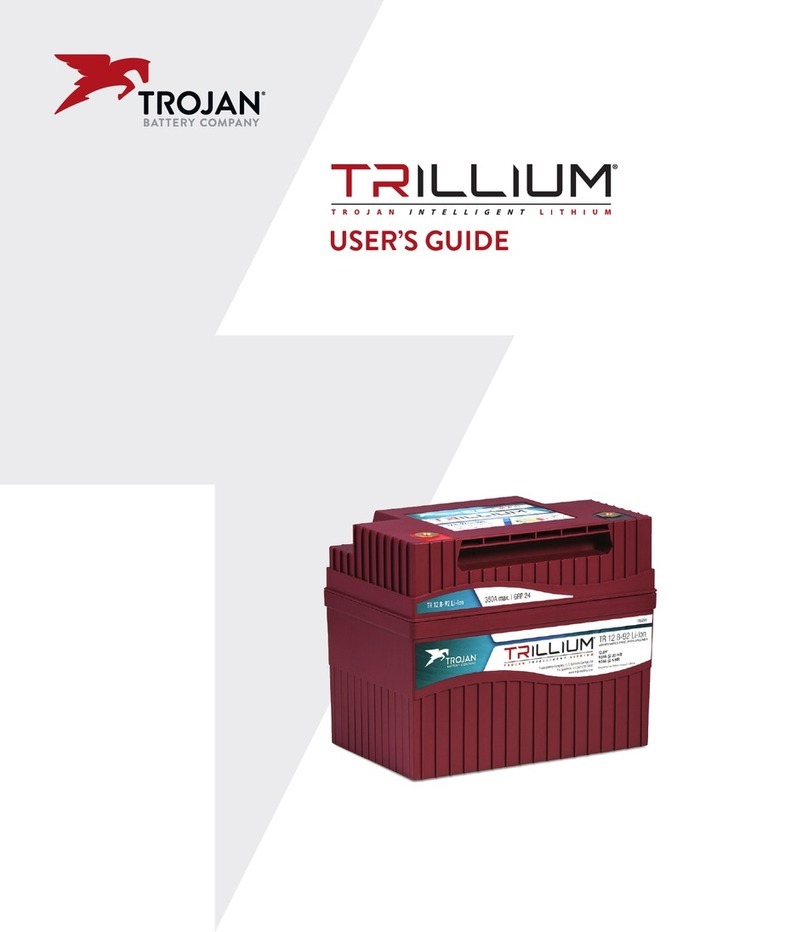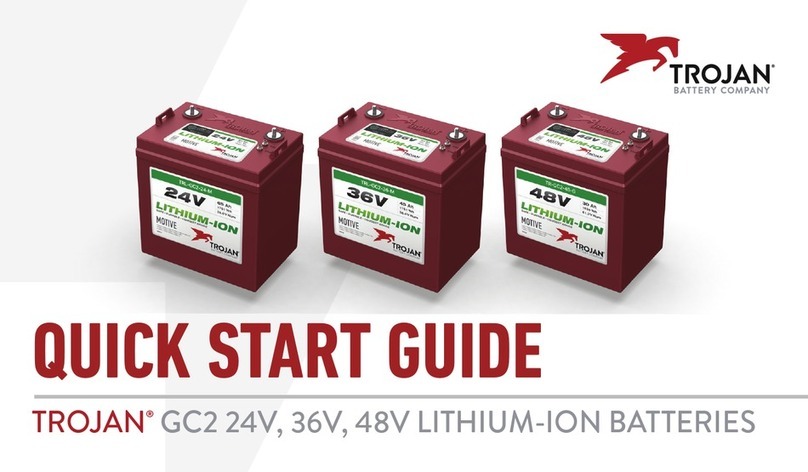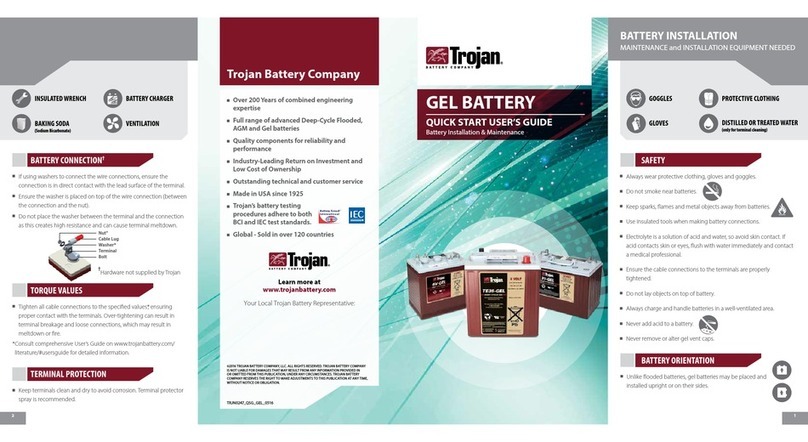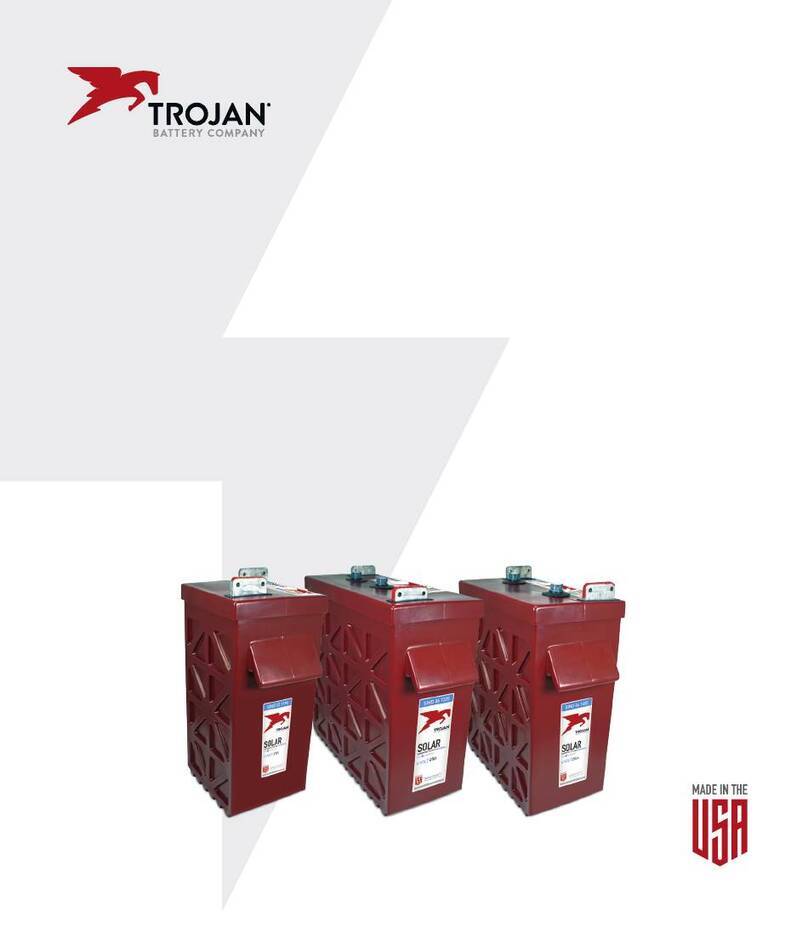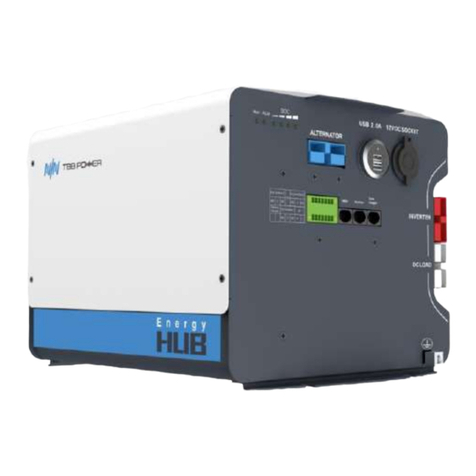Contents
01 Safety . . . . . . . . . . . . . . . . . . 5
02 Equipment Needed. . . . . . . . . . . . 5
03 Battery Installation . . . . . . . . . . . 6
3.1Battery Connections . . . . . . . . . . . . . 6
3.2Terminal Types . . . . . . . . . . . . . . . 6
3.4Cable Size . . . . . . . . . . . . . . . . .10
3.5Torque Values . . . . . . . . . . . . . . . .11
3.6Terminal Protection . . . . . . . . . . . . .12
3.7Connecting Batteries to Increase System Power . . .12
3.8Ventilation . . . . . . . . . . . . . . . . .13
3.9Battery Orientation. . . . . . . . . . . . . .13
3.10Battery Environment . . . . . . . . . . . .13
3.11Temperature. . . . . . . . . . . . . . . .13
04 Preventative Maintenance . . . . . . . . 14
4.1Inspection . . . . . . . . . . . . . . . . .14
4.2Watering . . . . . . . . . . . . . . . . .14
4.3Cleaning. . . . . . . . . . . . . . . . . .16
4.4Charging & Equalizing. . . . . . . . . . . . .16
4.4.1Boost Charging . . . . . . . . . . . . . .16
4.4.2Charging . . . . . . . . . . . . . . . .18
4.4.3Equalizing . . . . . . . . . . . . . . . .22
05 Storage . . . . . . . . . . . . . . . . . 24
5.1Storage in Hot Environments . . . . . . . . . .24
5.2Storage in Cold Environments . . . . . . . . .24
06 How to Maximize the Performance of your
Trojan Battery . . . . . . . . . . . . . . 24
07 What to Expect from your Trojan Battery . 25
08 Trouble-Shooting. . . . . . . . . . . . . 26
8.1Preparation for Testing . . . . . . . . . . . .26
8.2On-Charge Voltage Testing . . . . . . . . . . .26
8.3Specic Gravity . . . . . . . . . . . . . . .27
8.4Open Circuit Voltage Testing . . . . . . . . . .27
8.5Discharge Testing . . . . . . . . . . . . . .28
09 Battery Recycling . . . . . . . . . . . . 29
10 Battery Acronyms . . . . . . . . . . . . 30
